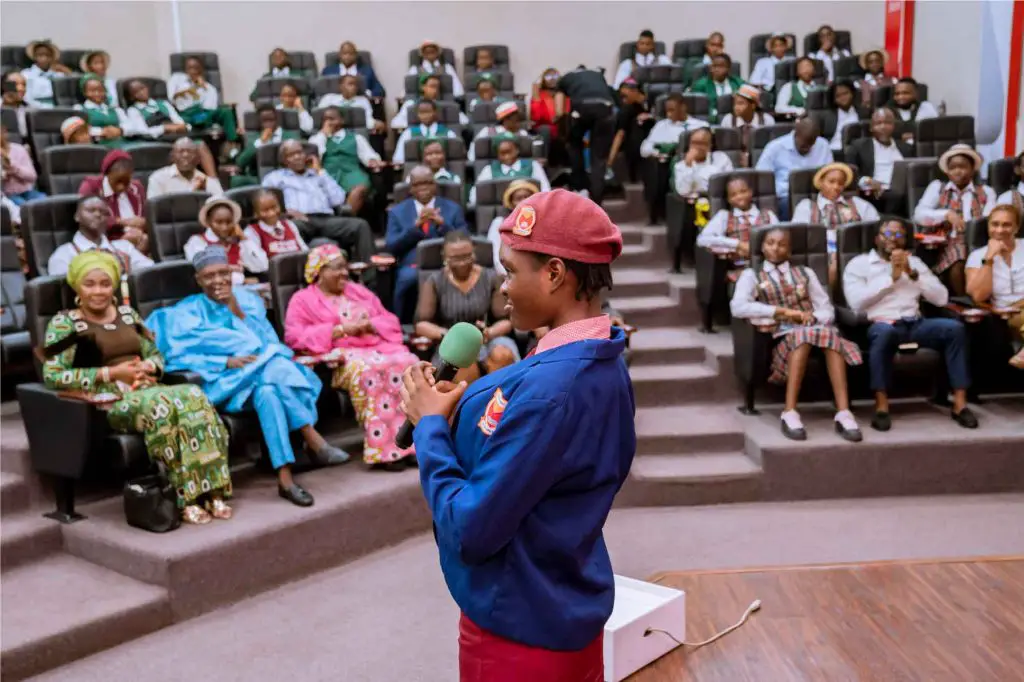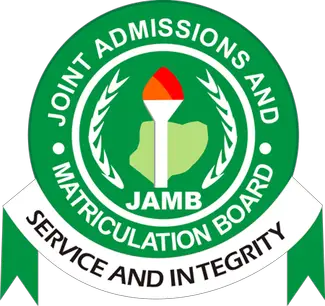The JAMB Art syllabus is the topic you must study for the UTME examination.
Using the JAMB syllabus to study for your examination is the open secret to getting a high score.
The JAMB Art syllabus also contains objectives for each topic. These objectives are what you must know for every topic you study.
This post contains the complete list of topics in the JAMB Art syllabus.
Let me know in the comment section if you have any questions.
JAMB Syllabus for Art

Art Appreciation
Objectives
Candidates should be able to:
i. appreciate the aesthetic qualities of natural and man-made aesthetic phenomena in the Nigerian environment.
ii. differentiate between natural and man-made aesthetic phenomena.
Content
(a) Man-made objects: architecture, sculpture etc.
(b) Natural phenomena: Zuma Rock, Ikogosi Warm Springs, etc.
Art Entrepreneurship
Objectives
Candidates should be able to:
i. identify job opportunities in visual arts.
Content
Job prospects in Visual Arts: Ceramist, Curator, Textile designer, Industrial designer, Sculptor, Photographer, Cartoonist, Illustrator etc.
Art Terms
Objectives
Candidates should be able to:
i. identify art terms.
ii. link the terms to their areas of art.
iii. use the terms in analyzing artworks.
Content
Pigments, motif, greenware, armature, silhouette, chiaroscuro, cireperdue, terra-cotta etc.
Artistic Skills, Techniques and Processes
Objectives
Candidates should be able to:
i. the techniques, skills and processes with emphasis on tone, composition and colour application.
ii. the types of perspective.
iii. the use of perspective rules and terms.
iv. techniques, skills and processes.
v. The basic tools of designs.
Content
(a) Two-Dimensional Art: drawing, painting, graphics and textile design.
(b) Perspective:
i. Linear, angular, aerial, parallel etc.
ii. Perspective terms: foreground, picture plane, eye-level, vanishing point, foreshortening, optical illusion, depth etc.
(c ) Sculpture, Ceramics and Crafts.
(d) Computer Graphics CorelDraw.
Classification of Art
Objectives
Candidates should be able to:
i. differentiate between the three branches of art.
Content
(a) Visual Arts: (Fine and Applied Arts).
(b) Performing Arts: (Music, Dance and Drama).
(c) Literary Arts: (Poetry, Prose, Recitals) etc.
Development in Contemporary Nigerian Arts and Artists
Objectives
Candidates should be able to:
i. determine the influence of the art schools and groups.
ii. assess the artists in terms of their works, specializations, techniques and styles.
iii. analyse the functions of museums, galleries, art centres and art institutions.
iv. evaluate their impact on the development of art.
v. assess their roles and functions.
vi. examine the impact of major festivals on art and culture.
Content
(a) Art Schools: Zaria, Nsukka, Osogbo group etc.
(b) Nigerian artists and art educators; Aina Onabolu, Ben Enwonwu, S. I. Wangboje, Jimoh Akolo, Dele Jegede etc.
(c ) Museums, galleries and art centres.
(d) Art institutions, cultural art centres, national art organizations – Nigerian Society for Education through Arts (NSEA), Society for Nigerian Artists (S.N.A), National Council for Arts and Culture (N.C.A.C), etc.
(e ) Major Festivals: Argungu Fishing Festival, Eyo, Egungun, Iri-ji (New Yam), Durbar, Igue, Ekpo, Odo, etc.
Elements and Principles of Design
Objectives
Candidates should be able to:
i. identify the elements of design.
ii. analyse the principles of design.
Content
(a) Elements: line, colour, shape, form, texture, tone, value, space etc.
(b) Principles: balance, rhythm, proportion, harmony, contrast, repetition, dominance, variety, etc.
Historical Dimensions of Art
Objectives
Candidates should be able to:
i. compare their materials, styles and techniques.
ii. classify the periods and styles with an emphasis on architecture, surface decoration and calligraphy.
iii. compare the artists, their works and styles.
iv. differentiate between the various art movements.
v. Analyze their styles techniques, innovations and influences.
Content
(a) Prehistoric, Greek and Roman Art.
(b) Medieval Art: architecture, surface decorations and calligraphy.
(c ) Renaissance Art and Artists: Giotto Di Bondone, Michelangelo Buonarroti, Leonardo da Vinci and Raphael (Raffaello Santi).
(d) 19th and 20th Century art movements; Impressionism, Realism, Futurism, Cubism, Bauhaus, Pop art, Abstract Expressionism and Fauvism.
Meaning and Functions of Art in Society
Objectives
Candidates should be able to:
i. examine the meaning and functions of art.
ii. use art to enhance societal values.
iii. assess the role of art in media.
Content
(a) What art is.
(b) Functions of art in society: religious, social, cultural, political, therapeutic and economic needs.
(c ) Functions of art in media: advertisement, education, recreation etc.
Nigerian Crafts
Objectives
Candidates should be able to:
i. trace the origins, locations and styles.
Content
Pottery, woodworks, cloth-weaving, carving, leather works, metal works, beadworks, body decoration, mat and cane weaving.
Tools, Materials and Equipment
Objectives
Candidates should be able to:
i. maintain tools and art materials.
ii. use art materials and tools.
iii. operate and maintain art equipment.
iv. improvise alternatives.
Content
(a) Two-Dimensional Art Tools: brushes, lino cutters, drawing instruments, calligraphic pens, sharpeners etc.
(b) Two-dimensional Art Materials: pencils charcoal, pastel, crayon, fixative, fabric, dyes, lino, wood blocks etc.
(c ) Two-Dimensional Art Equipment: air compressor, spray gun, enlarger, computer.
(d) Improvisation of tools, materials and equipment
i. Two-Dimensional Art: colours, brushes, calligraphic pens etc.
ii. Three-Dimensional Art: spatula, kiln, beater, etc.
Traditional African Art
Objectives
Candidates should be able to:
i. categorise works in terms of style, materials and locations.
ii. categorise works in terms of styles, materials and locations.
Content
Egypt, Ashanti, Dogon, Mossi, Fon, Senufo, Bambara, Mende, Kissi, Bamileke and Bakumba.
Traditional Nigerian Art
Objectives
Candidates should be able to:
i. analyze the works in terms of functions, characteristics and locations.
Content
Nok, Igbo-Ukwu, Ife, Benin, Esie, Igala, Jukun, Akwashi, and Mbari.
JAMB Recommended Textbookds for Art
- Banjoko I. (2000) Visual Arts made Easy: Textbook for Schools and Colleges, Lagos, Movic Publishing Company Ltd.
- Egonwa, O.D. (1991) African Art: A contemporary Source Book, Benin: Osasu Publishers.
- Egunlae, S.A. (1985) The Essential Ground work in Art and Design, Omotola Standard Press and Bookshop (Nig) Ltd.
- Erese, U. O. and Ogunsina E. D. (1989) Creative Arts and Crafts for J. S. S. Onibonoje Press.
- Nahab, S. J. (2003) Art of the Millennium for Senior Secondary Schools, Ehindero (Nig.) Ltd.
- Ogumor, E. (1993) Certificate Art for Junior Secondary Schools and Senior Secondary Schools, Ibadan: University Press Plc.
- Olaosebikan W. A. (1982) Cultural and Creative Arts, Evans.
- Olurukooba, B. K. (1991) Art for Senior Secondary Schools, ABU.
- Uzoagba I. N. (1982) Understanding Art in General Education, Onitsha; African Publish Ltd.
- Wangboje, I. N. (1982) A Textbook on Art for Junior and Senior Secondary Schools, Evans Publishers.
Let me know if you have any questions or need further clarification. I would love to assist you.
You can watch my videos on the Studentship YouTube Channel by clicking here.
Join my Facebook Group, Like my Facebook Page or Follow Me on WhatsApp for more interactive discussions.

Please where does jamb lessons hold?
Chijioke,
You can register at any JAMB lesson centre close to you.
Thank you Jesus christ for the life long read and write for this jamb 2022 year thank you GODThank you Jesus christ for the life long read and write for this jamb 2022 year thank you GOD.